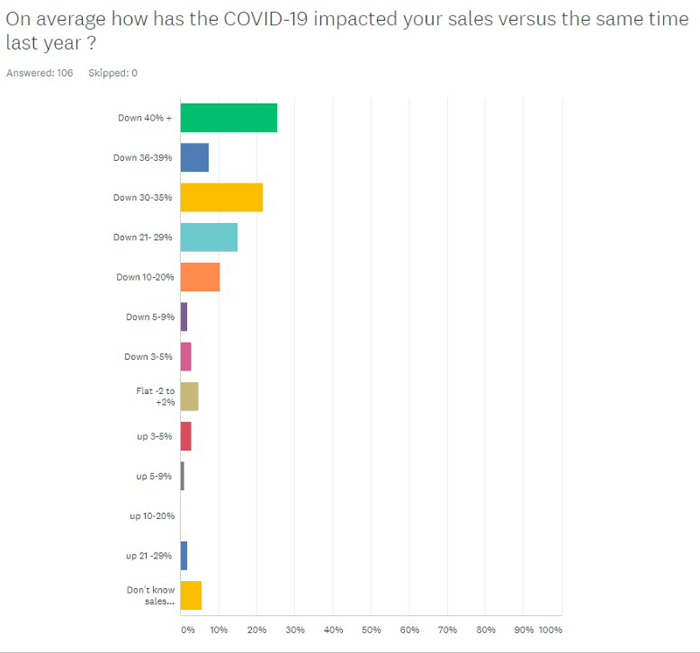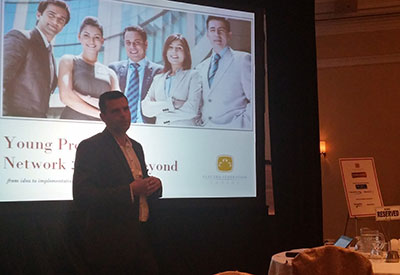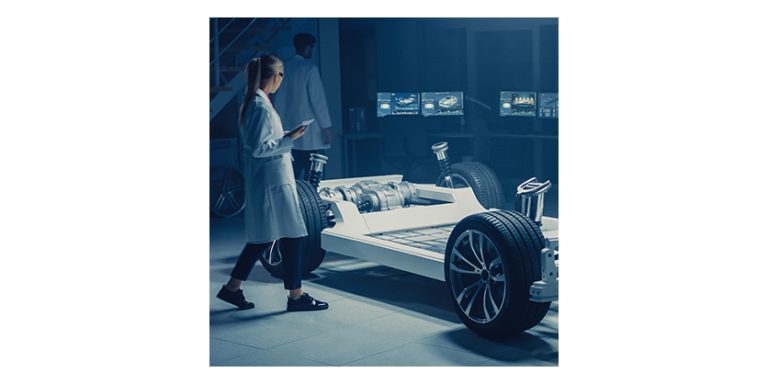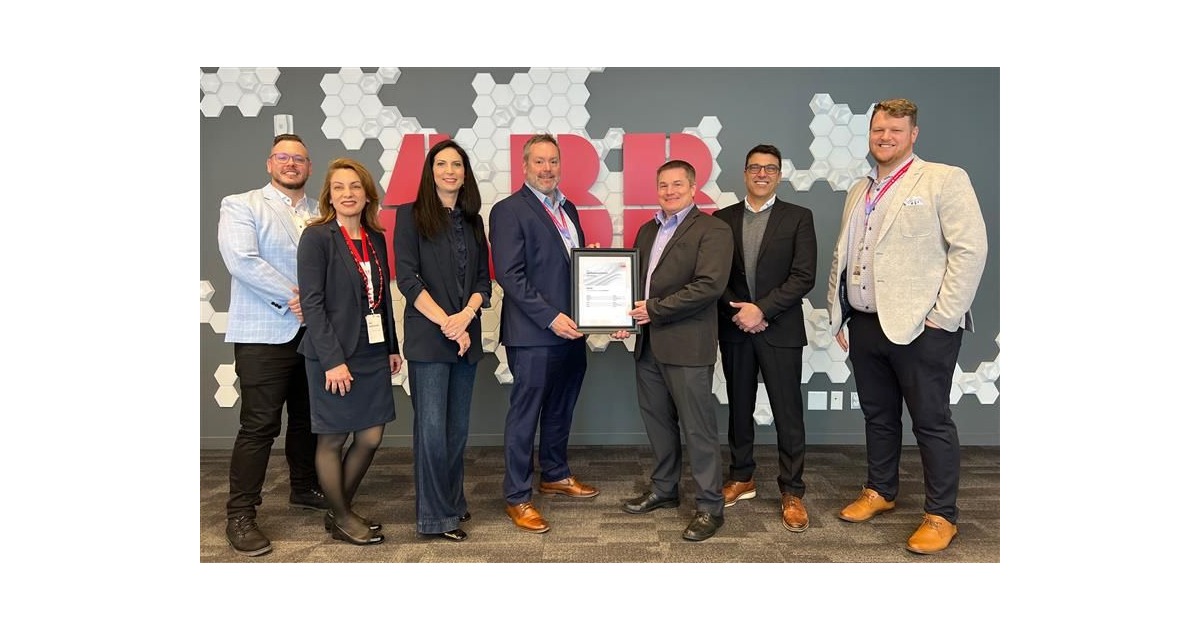Solving Smart Manufacturing Problems Today – and Into the Future

December 4, 2024
By Krystie Johnston
Smart manufacturing faces a myriad of challenges: a shortage of skilled labour. supply chain issues, and technological advancements that, for companies who cannot keep pace, threaten a competitive edge. Solving these problems today, and into the future, is critical to ensure the success of the industry.
Empowering the next generation to explore careers in the skilled trades – especially smart manufacturing – provides considerable benefits for young people and the society in which they live and work. Networks such as Manufacturing USA play a key role in these efforts by sharing information and a united vision for the future of manufacturing.
In September, Manufacturing USA returned to IMTS, the largest trade show in the Western Hemisphere, to share information about their smart manufacturing work and resources. At the IMTS Smartforce Student Summit, Olivia Morales was part of a panel of young, innovative “Modern Makers,” and discussed her journey to a career in manufacturing. She also shed light on how today’s students can get involved to take on the challenges of tomorrow’s jobs in smart manufacturing.
Smart Manufacturing Architect Overview
Morales is a Solutions Architect at CESMII, which stands for the Clean Energy Smart Manufacturing Innovation Institute. CESMII is one of Manufacturing USA’s 17 network institutes focused on supporting manufacturing, particularly advanced manufacturing, within the United States.
“We focus on smart manufacturing and democratizing smart manufacturing for all manufacturers in the U.S., but especially for small and medium manufacturers,” Morales explains. “My role within that is as a Solutions Architect. I work with project teams – both manufacturers, technology providers, and academia – to solve some of those smart manufacturing problems or apply smart manufacturing technologies.”
The manufacturing industry in North America faces challenges such as a shortage of skilled workers, supply chain issues, and advancing technologies that have an impact on operations. Its future will be shaped in part by the next generations, but a pathway into this industry is not always clear. Morales recalls that as a kid in high school, she always enjoyed working with her hands, so she took classes like shop and engineering because they were interesting to her.
“But” she admits, “I never really connected the dots between those classes, of those skills, and manufacturing – until I started actually [emphasis added] working in manufacturing.”
Morales’ passion for technology and problem solving, combined with an enjoyment of working with her hands, guided her into a career in smart manufacturing. In college, she started studying Mechanical Engineering, then switched to Computer Engineering, taking classes she enjoyed. After college she landed a job at Rockwell Automation. “That was sort of my first taste of actually touching the manufacturing industry directly. It was something I did not know much about. I did not have a lot of exposure to that industry until I started working in it,” she recalls.
Morales is a natural fit for smart manufacturing but was unaware until she was exposed to it. Smart manufacturing is a relatively new concept on the industrial revolution timeline, and – with the rapid pace of advancements – it can be challenging to prepare for. She has walked that uncertainty and come through the other side.
“Every step of the way, it sort of feels like a fork in the road, but you are just kind of making the best decision that you can with the information that you have. And then, you look back and you say, ‘Wow. That does make sense. I have gained the skills along the way that have led me here.’ But back then, I did not have the perspective to see everything that could come from one little decision.”
Working to Secure the Future of Smart Manufacturing
Today, Morales’ job is to help machines communicate and work together by sharing data with both the operators and the manufacturing ecosystem they are part of. As a Solutions Architect, she works with machine data and creates models to improve the manufacturing process, which is not always easy to do. Historically, operational technology (OT), which most heavy machinery is built upon to run autonomously, and information technology (IT), which encompasses the connected operating systems that generate and run on data, have functioned separately. Breaking the walls between them takes skill and knowledge and was not exactly a textbook career when Morales was coming up.
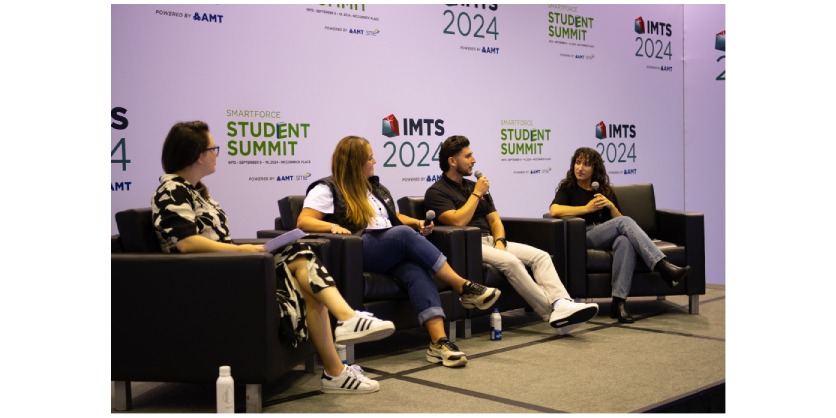
“There is a lot of information being produced on the operation technology level, but the information technology section cannot really use that because there is this divide,” Morales explains. “In the past few years, or decade, that line has been blurred between the two. And there is more of an understanding that the IT needs to be able to leverage the data that is coming from the actual operation – if you want to be able to make these business decisions and have accurate information about what you are actually doing, and building, and planning.”
Data is key to smoothing IT/OT cooperation. Anyone familiar with a computer can appreciate the sheer volume of information to run a simple program, which becomes exponentially complicated in an smart manufacturing setting. “There is a lot of data; there are a lot of applications, there are web applications and things like machine learning algorithms that can be applied to the data that you are collecting. All the IT technology has evolved in a very different way compared to the operational technology,” she says.
“Operational technology has been built to last. There are controllers and PLCs and computers that have been specifically designed to last decades – and they are lasting decades. But because of that, the technology moves more slowly. People do not want to switch out the old technology that works. So, we have to find creative ways to let the old and the new interoperate and move these manufacturers towards the world where they have better ability to gain insights form the data,” she adds.
Advancing Technologies Are Fundamentally Changing Manufacturing
This sort of counselling for OT and IT relationships was not a career in smart manufacturing that students might have considered a decade or two ago – but it is vitally important today for companies that face these challenges and do not know how to optimize it to remain competitive today and into the future. Solutions Architects and other similar experts are what is needed to solve these problems today and into the future. Part of ensuring there is a stream of new talent starts with exposing young people to these often-unknown positions and helping them align their interests to solve other problems related to smart manufacturing.
For Morales, a day at work consists of what she calls “high-level and low-level” activities, which includes looking at the various pieces of technology that need to “fit” together and figuring out what the best practice to achieve that is. It can involve researching existing standards that apply to interoperability. And when those cannot be found, she comes up with architectural plans and refence architectures to implement those concepts.
“Part of my day might be writing some code to connect to a data source, connect with a sensor, and maybe display that data on a dashboard. That hands on component really helps me understand what manufacturers and technology provides are challenged with and helps me better develop the reference architectures that we are trying to proliferate in the industry,” she says. Morales admits that her job is complicated, but she also offers that part of CESMII’s role is to help manufactures de-risk these challenges as they approach smart manufacturing problems.
Morales’ job is exciting every day because, not only does she get to solve problems, but she also gets to be part of an industry that is experiencing a lot of movement towards new concepts within the manufacturing technology space. She enjoys helping companies find solutions, and not have to start from scratch. Moreover, Morales helps the industry by serving as a smart manufacturing thought leader, acting as a panelist at various events, round tables, and shows, to guide and inspire the next generation.
There Are A Lot Of Types Of Work and Cutting Edge Work
One thing she has learned is that manufacturing is behind everything and is fundamental to what makes so much of our society run. North America has manufacturing industries and infrastructure, and it needs to be taken care of by the next generation of workforce. And, for this to happen, the next generation needs to have exposure to the types of jobs that currently exist, that are going to exist, and the types and varieties of roles that one can have in smart manufacturing industry. Part of this exposure involves teaching young people more about the industry.
“Building more awareness is helpful for both the youth and the general public. It will help the workforce. It will help with investment in manufacturing,” Morales says. “For the youth, it helps them gain an awareness [of the industry], so that we make sure that there is a steady stream of talent going into these fields. As a young person, it is hard to envision yourself in something that you have never seen or talked about with an adult.” She says that creating more exposure to these roles in as many ways as possible will help across the board.
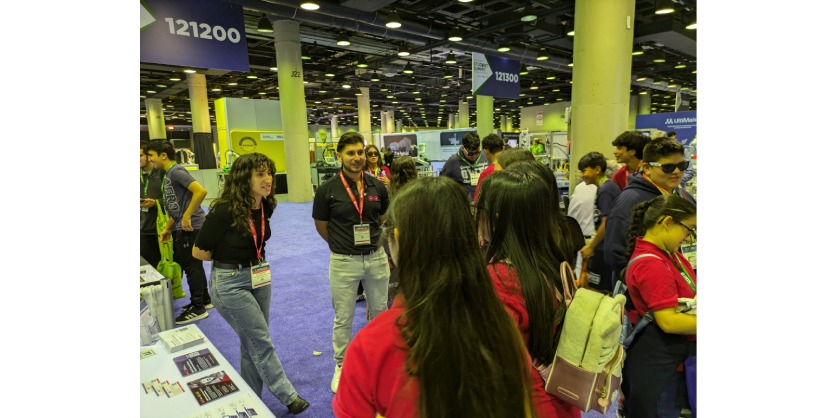
What is her advice for students today who are considering a career in the skilled trades? Morales has been in these shoes, and, having walked part of the journey that youth face today with respect to the uncertainty of what their future career will be, offers practical advice that is easy to follow. She recommends doing two things:
First, see if you can find one or two mentors, formal or informal. And if you do not feel like you have access to a person who already works in this field, reach out to a network like Manufacturing USA, especially on the education side of things, or one of the individual institutes. LinkedIn can be another way to connect with a mentor in the industry. Morales says most people are eager to help guide a young person, so do not be shy about reaching out or asking questions.
Second, she recommends that young people avoid putting themselves into a box as they begin their approach to an education and career. Lead with your own curiosity, pair it with what you are good at, or want to be good at. And keep an open mind, because sometimes gaining experience is not climbing a ladder but moving laterally instead. You may be interested in something that you have no experience with, but you are interested regardless – so go for it. We tend to have a conception of who we are and what we are good at or what our role should be, and that can be really limiting.
Conclusion
Smart manufacturing is an exciting, ever-evolving industry and there are many rewarding careers that the youth of today can reach towards. Securing the future of manufacturing will benefit individuals and society. Networks like Manufacturing USA play a key role in educating the future workforce and exercise that responsibility be engaging youth at events like the IMTS Smartforce Student Summit, where attendees of all ages can learn about a career in manufacturing. Modern Makers like Olivia Morales are also beacons for those looking into the industry as a career choice and wondering what skills they might need to get there.
More Information
Clean Energy Smart Manufacturing Innovation Institute (CESMII)


